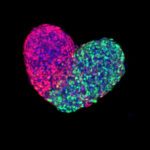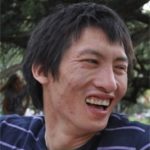Link to Pubmed [PMID] – 20365401
Phys Rev E Stat Nonlin Soft Matter Phys 2010 Jan;81(1 Pt 1):011909
Plasmids are extra chromosomal DNA that can confer to their hosts’ supplementary characteristics such as antibiotic resistance. Plasmids code for their copy number through their own replication frequency. Even though the biochemical networks underlying the plasmid copy number (PCN) regulation processes have been studied and modeled, no measurement of the heterogeneity in PCN within a whole population has been done. We have developed a fluorescent-based measurement system, which enables determination of the mean and noise in PCN within a monoclonal population of bacteria. Two different fluorescent protein reporters were inserted: one on the chromosome and the other on the plasmid. The fluorescence of these bacteria was measured with a microfluidic flow cytometry device. We show that our measurements are consistent with known plasmid characteristics. We find that the partitioning system lowers the PCN mean and standard deviation. Finally, bacterial populations were allowed to grow without selective pressure. In this case, we were able to determine the plasmid loss rate and growth inhibition effect.

